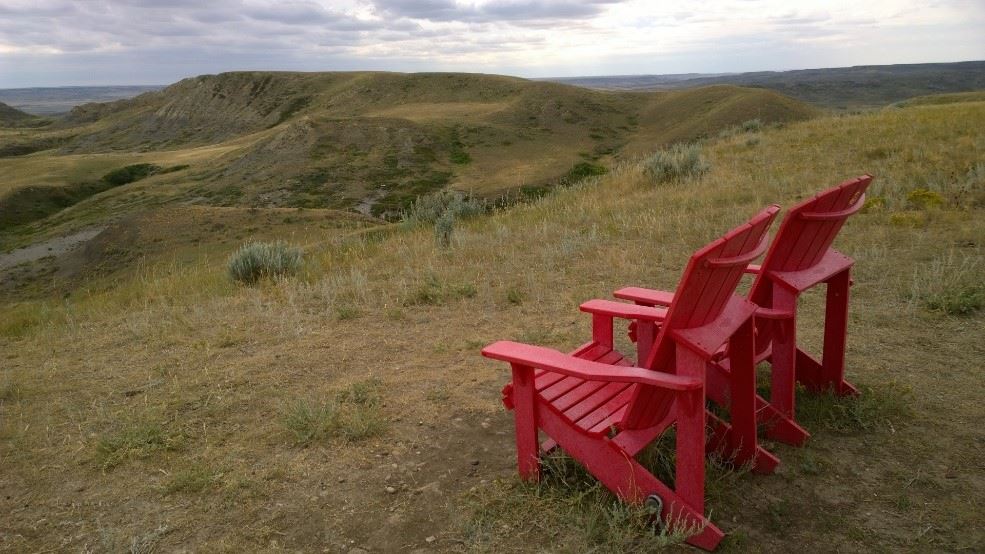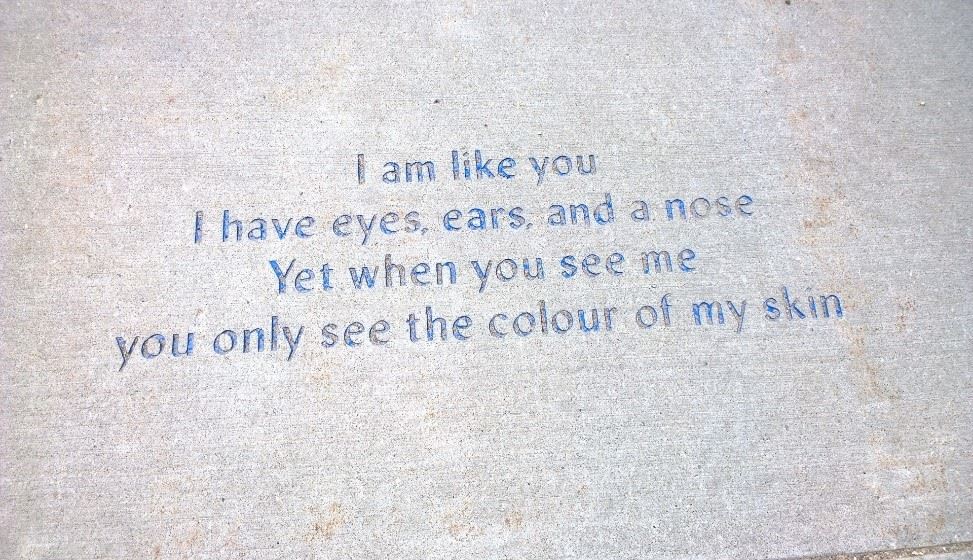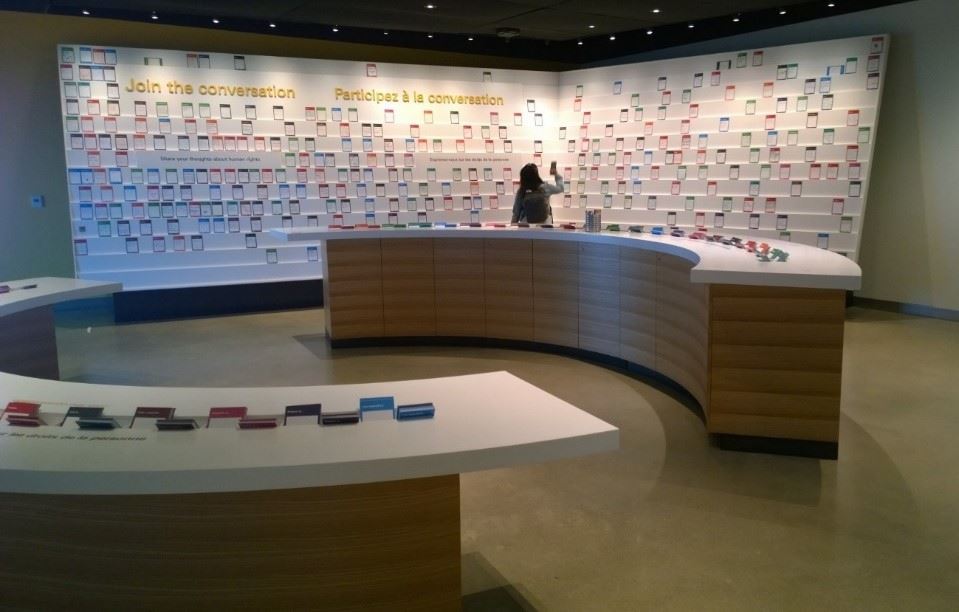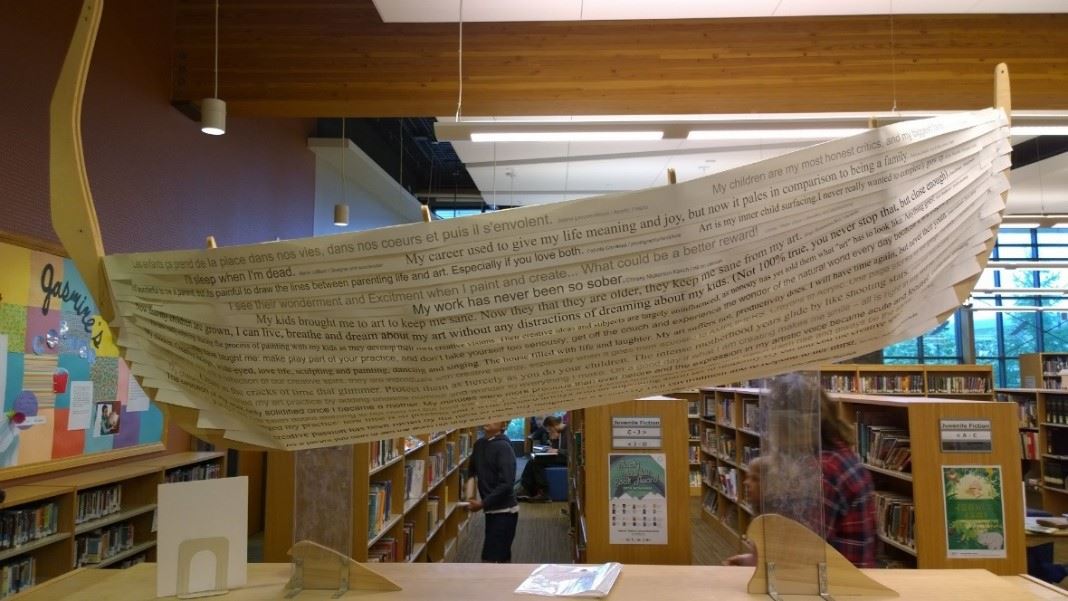By Bill Reynolds, Interpretive Coach, Experiential Interpretive Design
The following summary notes were compiled by the author based on a session he conducted during the highly stimulating 2019 IC conference in Winnipeg, at the Canadian Museum for Human Rights.
Facilitator Bill’s note: This workshop modelled the dialogic interpretation principles of facilitate, listen, acknowledge and connect. My intent was to stretch the concept of dialogue in different directions and to help all heritage sites see the benefits of interpretive dialogue in other situations than just when dealing with difficult topics and human rights issues. The aim was to explore approaches to different mission-based dialogues, including non-sensitive topics, that would stimulate the exchange of ideas and elicit visitors’ reflective reactions.
After a quick self-assessment of participants’ familiarity with and experience employing dialogic interpretation (DI), it was clear that most participants had limited knowledge of and few experiences with it. The session explored the whys, who, whats and hows of DI.
Why Dialogue?
Deciding whether to incorporate DI into an interpretive toolbox requires coming to grips with “Why Dialogue?” Our keynote speaker Sarah Pharaon, International Coalition of Sites of Conscience, presented these four key outcomes:
- Provoke thought
- Inspire compassion
- Build acceptance
- Compel action
Participants shared DI techniques that had been used to spark attitude & behaviour change, to build bridges, to transfer information, to gather opinions, and to challenge assumptions (e.g. snakes). Additionally, DI was helpful during collaborations between neighbours and sites as well as supporting visitor acceptance of management decisions.
Who is involved?
Once you know why you are doing DI, then knowing your audience, the who is critical. Five options were shared:
- Visitor’s Internal Self
- Partner/family
- Strangers
- Groups (e.g. school, corporate)
- Community/global
The first option, visitor’s internal self, posed the possibility that dialogue does not always have to be face-to –face, it could be with yourself? Internal dialogue can be powerful when encouraged. The middle three are examples of visitor –visitor interactions. Community/global examples were supplied of centres using the internet to communicate with other centres and classrooms to have live discussions. The challenge is how to consciously set the stage for site visitors to enter into one (or many) levels of DI.
Types of Visitor Dialogue
DI situations can involve a range of topics and not just around sensitive and emotionally strained DEEP talk. We explored examples of who or what the visitor could converse with when visiting a site:
- Real Life Individual
- Person from the Past
- Inanimate Object
“Real Life Individual” is fairly common and is usually an interpreter or artisan demonstrator. Exploring beyond the normal choices, a site could enlist a curator, a local celebrity or historian or a storyteller.
You don’t need to be a living history site to use “Person from the Past.” For example, your site could have a “time machine portal” allowing certain Messengers of the Past to appear with questions for visitors to compare the past with the present.

A structure (barn), a natural feature (a river), or an artifact (a door handle), are all objects that would have witnessed many events or been touched by many people. You might need to inflict your visitors with a pinch of fantasy to make this work with interpretive staff having certain auditory and linguistic powers able to decipher specific object “language.” Alternatively, the object (e.g. barn) could direct the visitor to take action by directing them to “go around the back…” or “drop to your hands and knees to look for…”
Maybe challenging the visitor to create a conversation between objects that do not have an obvious connection (e.g. a slave shackle and a silver tea set placed together) could have evocative power.
Recommended Dialogic Stages
Stage 1: Pre-Dialogue increase receptiveness of the open mind
Stage 2: Focus Thoughts and Feelings
Stage 3: Post- Dialogue Share with others
Stage 1 Opening Minds
This stage has 4 parts:
- Welcoming – Receptiveness
- Feeling Comfortable
- Creating a safe, supportive space
- Perceiving in new ways
The session focussed on the first and fourth parts, the second and third were presented in other sessions.

Being open and receptive to various viewpoints is critical to setting the stage for dialogue. Isn’t the beginning of a dialogue with nature a way to form a new connection with the earth - the start of a regenerative relationship?
Generating different points of view, at a natural history site, could come from coaching people to be good receivers and providing them with new perspectives. New perspectives are aided by exposing visitors to sensory awareness exercise; seeing something from a new position -- in a wheelchair, from the ground (roleplaying an ant), or walking with a mirror held horizontally at shoulder height to view the canopy. A great resource would be the Earthwalks book created by the Institute for Earth Education. http://www.ieetree.org/education-tree/earthwalks/
Perceiving in new ways could be as simple as evaluating one’s language and comparing cultural differences. The use of the word “resistance” versus “rebellion” when discussing Métis history sets up a totally different mindset. Words do affect perception. Perhaps one word, “mindbodyearth” without separation could change our point of view and impact our land relationship. By thinking this way would you ever perceive that land could be owned?
Stage 2 Focusing Thoughts and Feelings
As several conference sessions were dealing with questioning tools, we pursued setting up the concept of walking in someone else’s shoes (or paws). An apartheid museum utilized two turnstiles for visitors allowing them to choose different perspectives during the visit – either as a white guard or a black prisoner. At a natural heritage area, the visitor could experience life as a predator or a prey? DI would be initiated after the experience to compare feelings and thoughts.
Fundamental to mission success is the evaluation of the visitors’ sense of a site’s reasons for being. DI could probe, “Why is this site significant?” What if visitors were asked to create a display (crowd curate technique) by picking one thing from an assortment of representative options and share why they chose their item.
Images from the past and present representing reality, propaganda, and discrimination helped conference attendees realize that photographs/paintings could be used more often as DI conversation starters. Similarly, quotes can be used– like this inscription on a sidewalk in a Canadian multiracial community.

Stage 3 Share with Other
Visitors need more opportunities to post thoughts and feelings beyond the shallow comments in guest books. The Canadian Human Rights Museum (CHRM) has a recording studio for audio sharing and has dedicated a large attractive space for visitors to write their reactions to the museum’s content.
Cards were used to kickstart the visitors’ voice, with phrases like:
- Respect is…
- Inclusion is…
- I am inspired by…
- I will…

In a less controversial setting like a heritage park, a starting phrase could be “I never knew…” where promoting curiosity/environmental understanding is the purpose.
Posting these cards on a wall is a quick way to share visitors’ responses. This is a kind of silent dialogue where visitors read what others wrote and add their own. The Canmore library, decided to share quotes from a local artist survey about the creative process by writing them on “birchbark” paper strips, creating a canoe.

Reflecting on our dialogue about the whys, whats, who and hows, we must consider whether the visitor experience has challenged assumptions, motivated visitors to learn more or inspired them to act.
Did this session’s treatment about the whys, whats, who and hows of DI succeed in challenging your assumptions, motivate you to learn more or inspire you to change in any way?
For over 40 years Bill Reynolds’s life work has pivoted around creating enriching experiences for people. Bill possesses a diverse background in heritage interpretation, visitor friendly site design, leisure attraction feasibility assessments and strategic planning. Presently he is an interpretive coach and co-writer of the Experiential Interpretive Design blog at www.eidcoaching.com which he hopes you check out for interpretive insights.